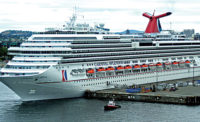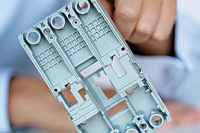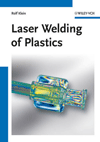Industrial PCs Streamline Welding of Cruise Ships

Nearly 700 ships of different types have been built by MEYER WERFT at its Papenburg, Germany, dock hall since 1795. Shown is the Disney Fantasy, which was completed in February 2012 and christened one month later. Photo courtesy MEYER WERFT GmbH

MEYER WERFT has installed 50 IPCs throughout its Papenburg, Germany, dock hall, including several in the welding and pipe-forming stations. Some IPCs are integrated into information boards. Photo courtesy noax Technologies AG


Papenburg, Germany, is home to the world’s largest shipbuilding dock hall, which is operated by MEYER WERFT GmbH. There, more than 2,500 workers design and assemble some of the largest cruise ships in the world. Nearly 700 ships of different types have been built at the hall since 1795, the most recent being the Norwegian Cruise Line’s Breakaway.
The hall is more than 500 meters long, and it features many types of workstations. At hull-construction stations, workers cut steel plates with lasers or weld plates together into sections for the ship’s hull. At other stations, workers build and install the ship’s interior framework, including the steel pipes that house ventilation, heating and air conditioning systems, electricity, water supply, sanitation and communication cables.
MEYER WERFT has installed 50 industrial PCs (IPCs) throughout the hall, including several in the welding and pipe-forming stations. The company operates S19 and C15 IPCs, both of which are made by noax Technologies AG. The S19 features a steel frame and 19-inch touch screen, whereas the C15 has an aluminum enclosure and a 15-inch screen. Most IPCs are operated separately, but some are integrated into information boards.
“The IPCs are the data communication backbone of the hall,” says Michael Welp, head of IT production planning and control for MEYER WERFT GmbH. “They feature MES software that helps supervisors coordinate and manage each stage of assembly.”
In welding stations, the welder enters the steel plate’s bar code number into the IPC to learn how the individual part is to be precisely welded. In pipe-forming stations, the IPC controls the CNC machine for precise cutting and bending of pipes.
All operating data is sent over a wireless LAN connection and collected in the control room. There, supervisors monitor who is working at a particular station at a particular time, which activities have to be performed, which work stages have already been completed and how long the individual employee has been working at the station.
IPCs have been used at the yard since 2005. Prior to that, the company manually entered work stage details and worker hours on paper forms, which were filed in the foreman’s office.
“That method was time consuming, and mistakes continuously occurred,” admits Welp. “Thanks to the IPCs, operational safety has improved, and the error rate has decreased. Both of these factors save us time and money.”
Welp is most impressed with the IPCs’ durability. The computers are constantly exposed to steel chips and sparks during hull construction, yet they have operated flawlessly for eight years, he notes. Moreover, lubricants used in pipe forming could easily penetrate a normal PC through the ventilation and damage it. But, the IPC is completely sealed and lets nothing in.
“The touch screen and function keys [let] our employees focus on their own tasks and not [be] hindered by complicated operation,” says Welp. “Plans and CAD models are clearly recognizable.”
The IPCs operate Windows 7 and consume little energy, which quickened MEYER WERFT’s return on investment. They also feature a proprietary all-in-one motherboard with audio and video capabilities.
For more information on industrial PCs, call 704-992-1606 or visit www.noax.com.
Looking for a reprint of this article?
From high-res PDFs to custom plaques, order your copy today!










